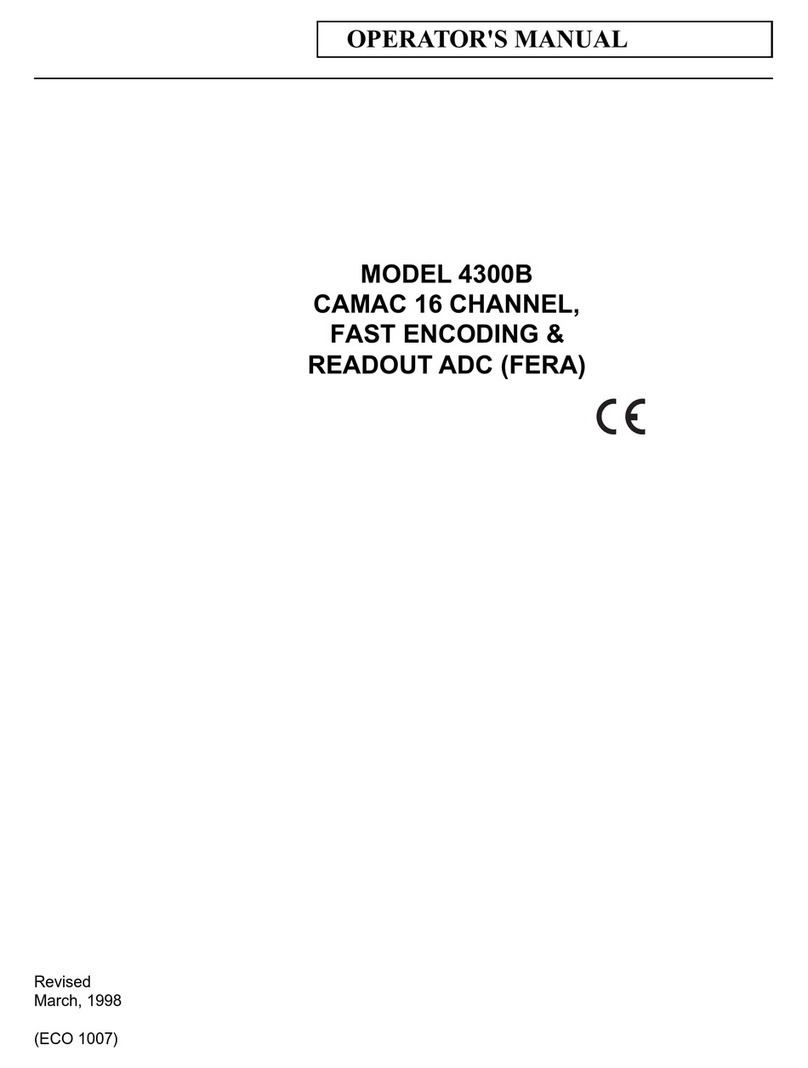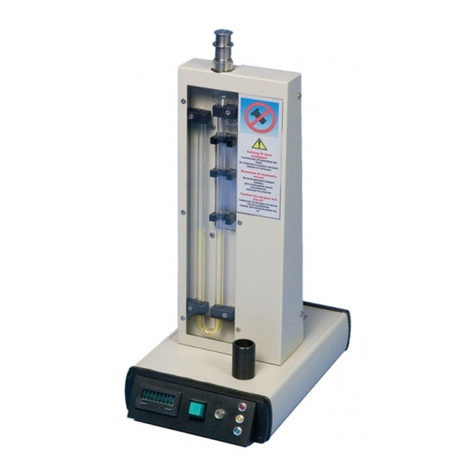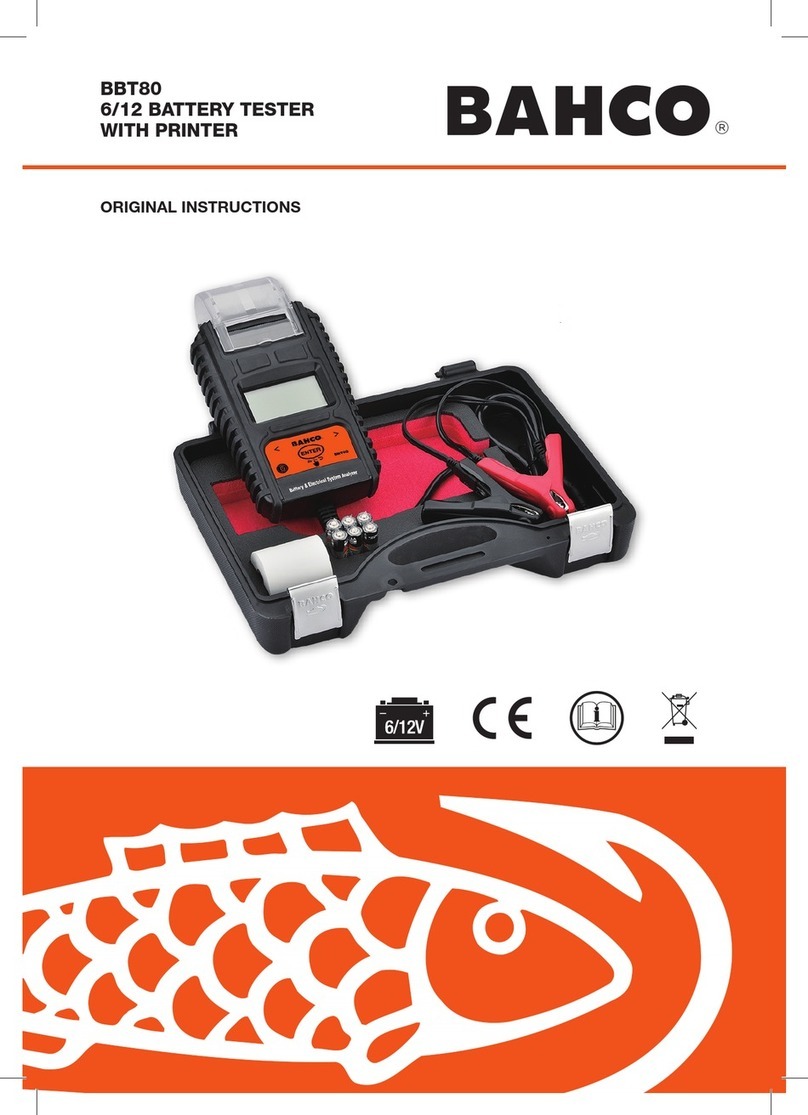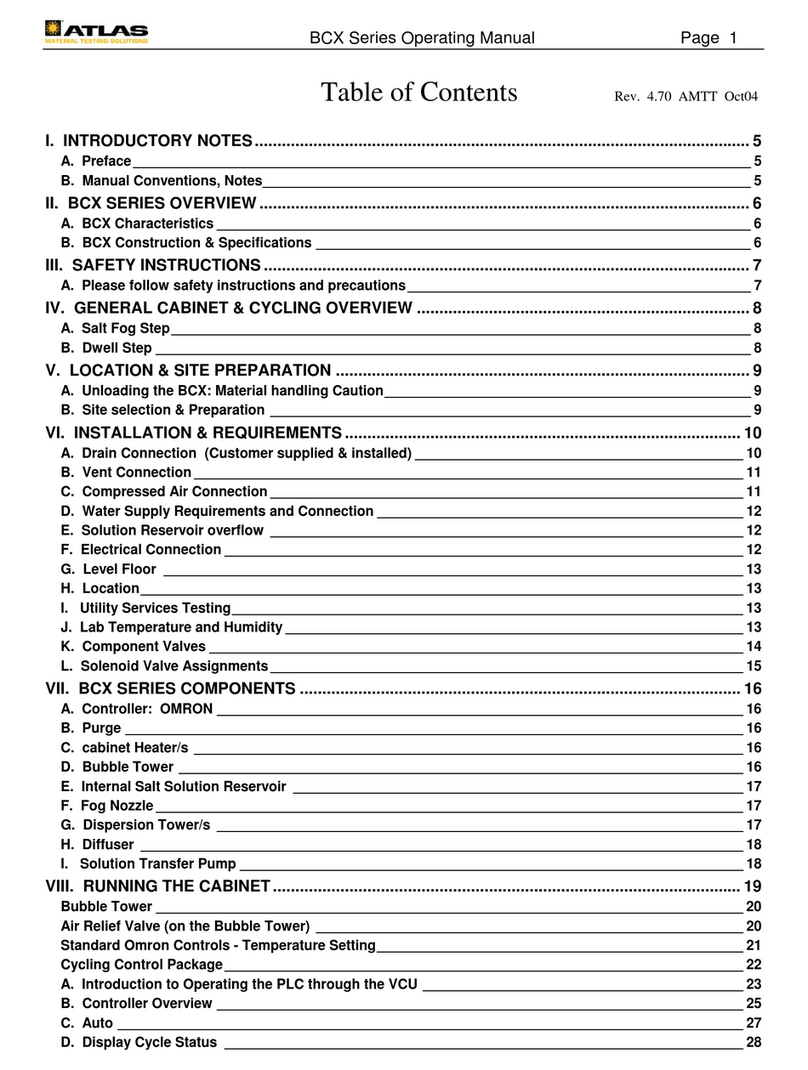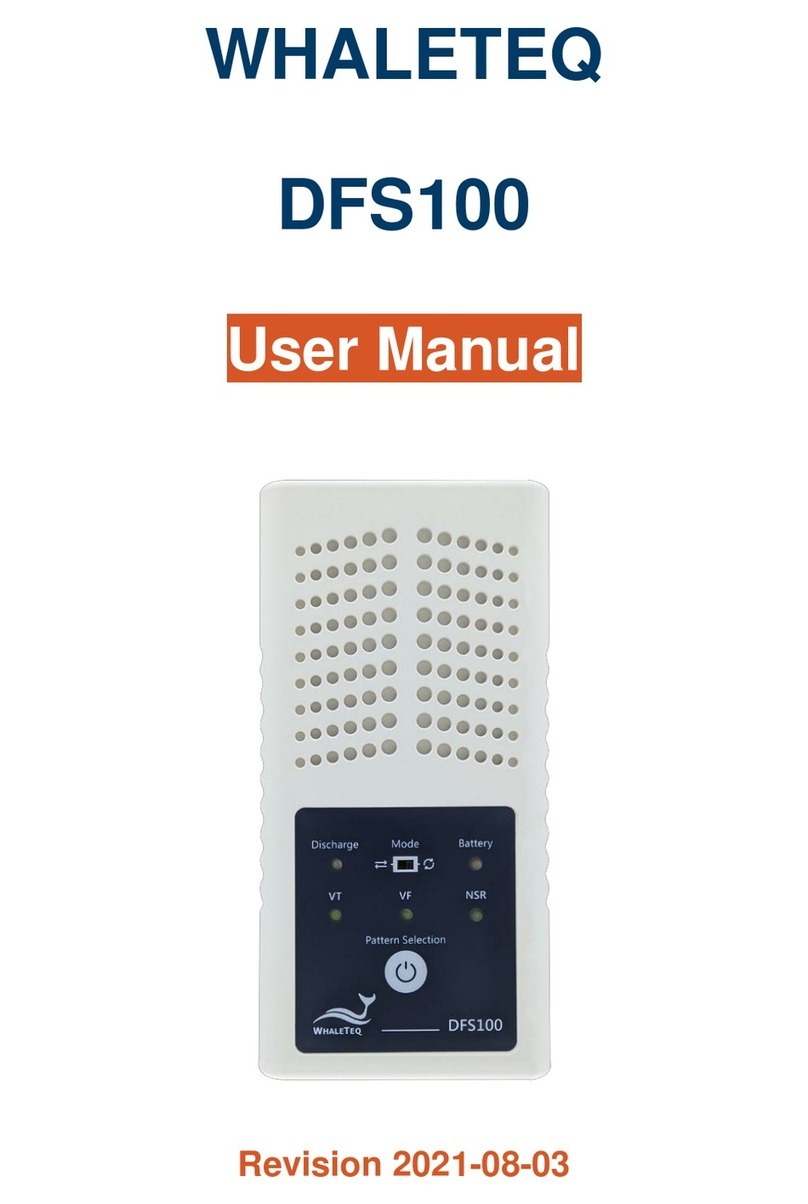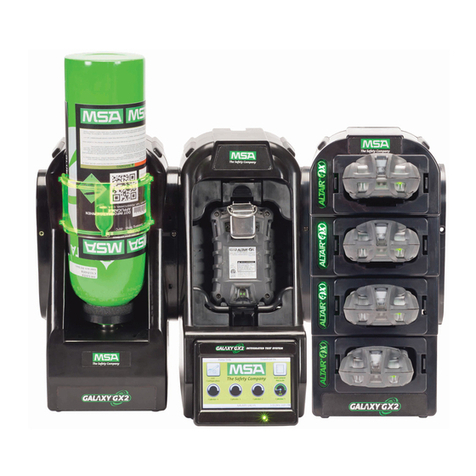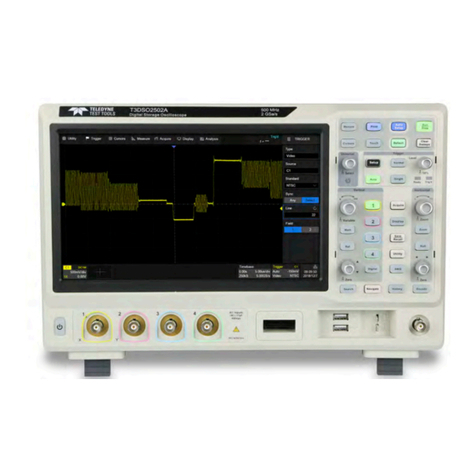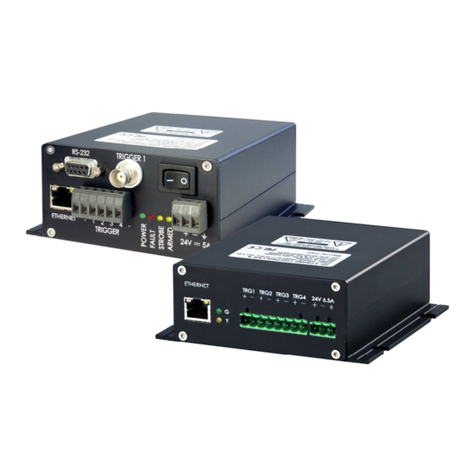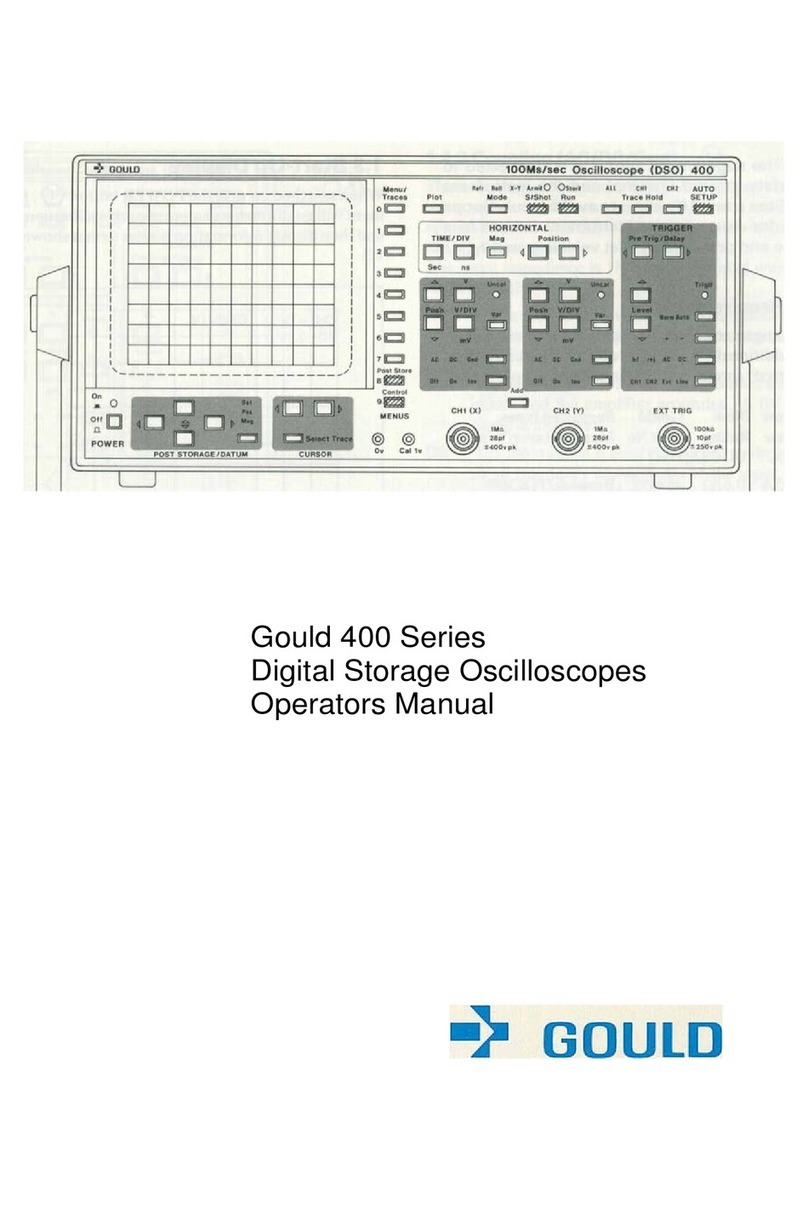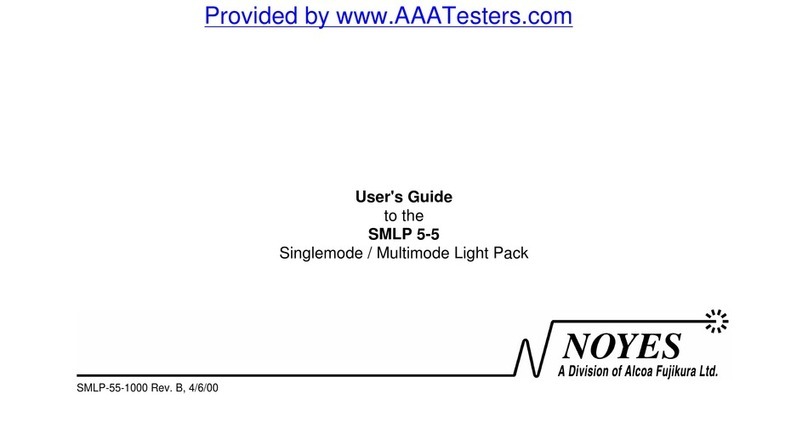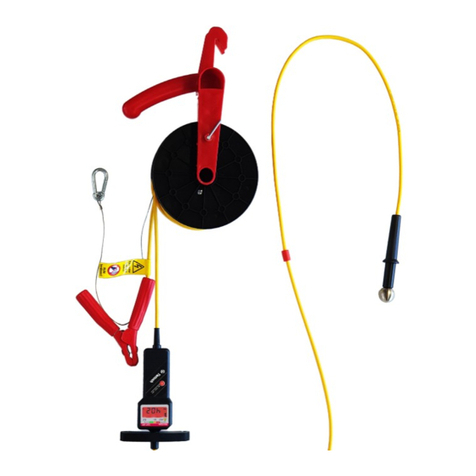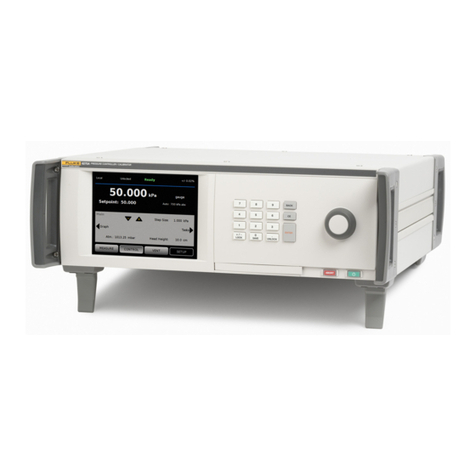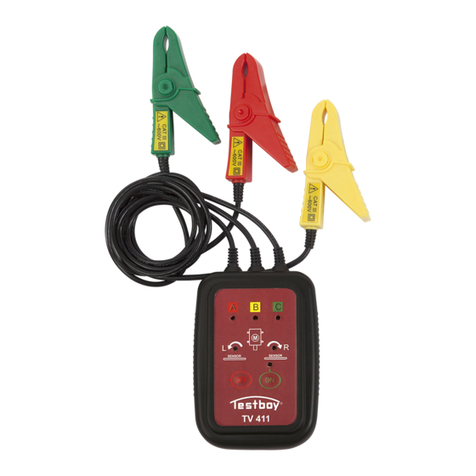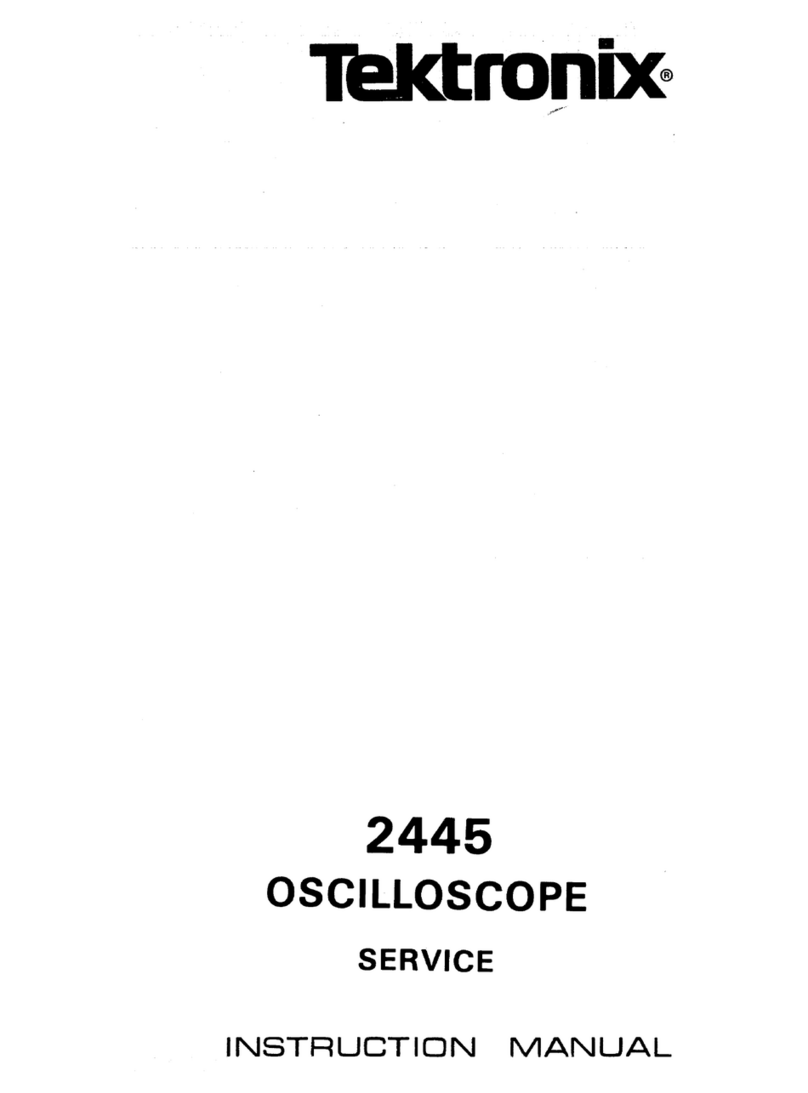Inficon FTC3000 Quick guide

Translation of the original operating instructions
FTC3000
Flexible test chamber for ELT3000
mima95en1-04-(2208)
Catalog No.
600-102
From software version
--

INFICON GmbH
Bonner Strasse 498
50968 Cologne, Germany

INFICON Table of contents
FTC3000-Operating-instructions-mima95en1-04-(2208) iii
Table of contents
1 About this manual .......................................................................................................................................... 5
1.1 Target groups........................................................................................................................................... 5
1.2 Warnings .................................................................................................................................................. 5
1.3 Definition of terms .................................................................................................................................... 6
2 Safety............................................................................................................................................................... 7
2.1 Intended use ............................................................................................................................................ 7
2.2 Duties of the operator............................................................................................................................... 8
2.3 Owner requirements................................................................................................................................. 8
2.4 Dangers.................................................................................................................................................... 9
3 Scope of delivery, transport........................................................................................................................ 12
4 Description.................................................................................................................................................... 13
4.1 Function ................................................................................................................................................. 13
4.2 Markings on the device .......................................................................................................................... 14
4.3 Technical data........................................................................................................................................ 15
5 Installation .................................................................................................................................................... 16
5.1 Setup ...................................................................................................................................................... 16
5.2 Mount the device.................................................................................................................................... 16
5.3 Connect device ...................................................................................................................................... 18
6 Operation ...................................................................................................................................................... 19
6.1 Perform leak test .................................................................................................................................... 21
7 Cleaning and maintenance.......................................................................................................................... 22
7.1 Sending for repair or maintenance......................................................................................................... 22
7.2 Cleaning the housing ............................................................................................................................. 22
7.3 Clean membranes and lip gaskets......................................................................................................... 23
7.4 Change membrane support ................................................................................................................... 24
7.5 Check liquid separator ........................................................................................................................... 28
7.6 Change liquid separator ......................................................................................................................... 29
7.7 Cleaning hoses ...................................................................................................................................... 30
7.8 Checking inline filter ............................................................................................................................... 31
7.9 Change inline filter ................................................................................................................................. 31
7.10 Change the hinges of the test chamber .................................................................................................32
7.11 Change the coil spring of the measuring chamber................................................................................. 33

Table of contents INFICON
iv FTC3000-Operating-instructions-mima95en1-04-(2208)
7.12 Service by the manufacturer ..................................................................................................................35
7.13 Maintenance plan FTC3000................................................................................................................... 35
8 Accessories and spare parts ...................................................................................................................... 36
9 Decommissioning ........................................................................................................................................ 37
9.1 Disposing of the device .......................................................................................................................... 37
9.2 Sending in the device............................................................................................................................. 37
10 CE Declaration of Conformity ..................................................................................................................... 39
11 UK Declaration of conformity...................................................................................................................... 40

INFICON About this manual | 1
FTC3000-Operating-instructions-mima95en1-04-(2208) 5 / 42
1 About this manual
Product names may occur in the document, which are added for identification
purposes only and belong to the respective owner of the rights.
1.1 Target groups
This instruction manual is intended for operators and technically qualified personnel
with experience in leak detection technology and the integration of leak detectors in
leak detection systems. In addition, the installation and use of the device require
knowledge of electronic interfaces.
1.2 Warnings
DANGER
Imminent hazard resulting in death or serious injuries
WARNING
Hazardous situation resulting in potential death or serious injuries
CAUTION
Hazardous situation resulting in minor injuries
NOTICE
Hazardous situation resulting in damage to property or the environment

1 | About this manual INFICON
6 / 42 FTC3000-Operating-instructions-mima95en1-04-(2208)
1.3 Definition of terms
Minimum detectable leak rate
The minimum detectable leak rate that can be detected by the leak detector under
ideal conditions (< 1 x 10-6 mbar l/s*).
* Helium equivalent leak rate for DMC with a pressure difference of 1000 mbar versus
0 mbar.
GCU
Gas Control Unit (basic unit, operating unit)
GDU
Gas Detection Unit
DMC
Dimethyl carbonate, typical solvent in battery electrolyte. CAS No. 616-38-6
MSDS
Material Safety Data Sheet

INFICON Safety | 2
FTC3000-Operating-instructions-mima95en1-04-(2208) 7 / 42
2 Safety
2.1 Intended use
The flexible test chamber is designed for leak testing of Li-ion cells and Li-ion
batteries. Uncharged cells / batteries can be tested safely. For testing charged cells /
batteries, further safety measures must be taken to avoid personal injury and damage
to property.
• For validation of the test, cells prepared as leaky are placed in the chamber. The
preparation of the cells, which creates further hazards, is performed by the
operator and is not an integral part of the test or the device. Testing of leaking
cells will result in soiling of the flexible test chamber and possibly "contamination".
Cells to be tested with the flexible test chamber must be pre-qualified. For this
purpose, uncharged cells are examined, for example, to determine whether they
can withstand the stresses of the leak testing. Suitable measures for the safety of
man and machine must be taken by the operator.
• The test objects must be filled with an electrolyte in which one solvent component
ideally consists of dimethyl carbonate (DMC, CAS No. 616-38-6).
• Depending on the internal structure of the test objects and the external
geometries, local mechanical stresses can occur on the test objects. This can
damage the test objects themselves, but also other components located in the test
chamber.
• Make sure that the test chamber and the outer wall of the test objects are clean.
Leak testing with charged test objects represents an additional safety risk and
should only be carried out by appropriately trained personnel and with the
installation of further safety measures.
• Make sure that the test objects are supported by the flexible membrane from all
sides. The distance between the test objects in the test chamber must be at least
four times the thickness of the test objects as a circumferential distance from other
test objects. Furthermore, a distance of at least 5cm to the edge of the test
chamber must be maintained.
Also, no other materials, except for specially designed protective frames or
protective edges, should be placed in the test chamber (e.g. holders for several
test objects), as this does not allow reliable stabilization by the test chamber
membrane on the test objects.
Incorrect usage Avoid the following unintended uses:
• Testing of partially or fully charged cells and batteries without further safety
measures
• Use outside the technical specifications, see "Technical Data".
• Use in locations with very low humidity.
• Use in radioactive areas.

2 | Safety INFICON
8 / 42 FTC3000-Operating-instructions-mima95en1-04-(2208)
• Use in potentially explosive atmospheres.
• Use in areas with risk of electromagnetic interference.
• Closing the test chamber while your fingers are in the swivel range of the test
chamber.
• Use of accessories or spare parts, which are not listed in this manual.
• Testing of test objects whose current collectors can be short-circuited via the test
chamber ring.
• Test of test objects that touch the sealing lips of the foil chamber.
• Test of sharp objects
• Testing of wet or damp test objects.
• Test of test objects with significant differences in temperature to the environment.
• Testing of cells and batteries that are visibly damaged.
• Use of tools that may damage the sealing surfaces or elastomers of the test
chamber during mechanical cleaning.
Note: This device is not intended to be used in residential areas and cannot ensure
adequate protection of radio reception in such environments. The battery leak detector
does not perform a safety function. In the event of strong electromagnetic interference,
measured values could be falsified. It is recommended to check the function of the test
chamber regularly (e.g. with a calibration leak).
2.2 Duties of the operator
• Read, observe, and follow the information in this manual and in the work
instructions provided by the owner. This concerns in particular the safety and
warning instructions.
• Always follow the complete operating instructions for all work.
• If you have any questions about operation or maintenance that are not answered
in this manual, contact customer service.
2.3 Owner requirements
The following notes are for companies or any person who is responsible for the safety
and effective use of the product by the user, employees or third parties.
Safety-conscious operation
• Only operate the flexible test chamber and the battery leak detector if it is in
technically perfect condition and shows no signs of damage.
• Only operate the flexible test chamber and the battery leak detector as intended,
in a safety-conscious and hazard-conscious manner and in compliance with these
operating instructions.

INFICON Safety | 2
FTC3000-Operating-instructions-mima95en1-04-(2208) 9 / 42
• Provide ambient conditions that are suitable for operating staff, the test chamber
and the test specimen.
• Adhere to the following regulations and observe their compliance:
– Intended use
– General applicable safety and accident prevention regulations
– International, national and local standards and guidelines
– Additional device-related provisions and regulations
• Only use original parts or parts approved by the manufacturer.
• Keep this instruction manual available on site.
Personnel qualifications
• Only allow instructed personnel to work with the flexible test chamber and the
battery leak detector. The instructed personnel must have received appropriate
training. This includes knowledge of the dangers posed by leaking electrolyte/
solvent.
• Make sure that authorized personnel have read and understood the instruction
manual and all other applicable documents.
2.4 Dangers
The measuring instrument was built according to the state-of-the-art and the
recognized safety regulations. Nevertheless, improper use may result in risk to life and
limb on the part of the user or third parties, or damage to the unit or other property
may occur.

2 | Safety INFICON
10 / 42 FTC3000-Operating-instructions-mima95en1-04-(2208)
WARNING
Danger to health due to hazardous materials and substances
Test specimens are usually filled with substances that are hazardous to health. If
these substances leak during the test, they are freely accessible to the operator after
the test.
► Wear appropriate protective clothing, especially gloves, gowns, and face shields.
► Ensure sufficient ventilation at the installation location.
► Avoid contact with skin, eyes, or clothing.
► Avoid inhaling these substances.
► Only test specimens for leak tightness that do not show any damage or smell of
electrolyte or solvent after initial inspection.
► Before removing the test specimen (visual check and smell test), check whether
any contents of the test specimen have leaked out.
► Pay attention to the risks posed by released electrolyte components and their
reaction products.
► Defective test specimens can develop gross leaks during the leak testing. In the
case of test specimens with gross leaks, observe the company's internal regulations
for handling electrolyte and the safety instructions in the safety data sheets.
► Do not pump out toxic or corrosive gases.
► Clean the device regularly and keep it clean at all times.
► Observe the safety instructions in the safety data sheets for the test objects.
► Operate the device only with a connected exhaust air connection and in well-
ventilated rooms. Alternatively, the device may be used in rooms where hazardous
substances under test are monitored.
► When nitrogen or argon is used as a purge gas, it can cause asphyxiation at
dangerous room concentrations. Suitable measures must be taken. The pressure in
the gas line to the purge gas connection must not exceed 100 mbar over
atmospheric pressure. An exhaust gas line must be connected.
WARNING
Fire and explosion hazard
Sharp foreign objects can penetrate into test pieces during the test procedure and
cause a short circuit. Defective test specimens can start a fire, even with a time delay.
The elastomer components of the device are not fire-resistant and cannot prevent the

INFICON Safety | 2
FTC3000-Operating-instructions-mima95en1-04-(2208) 11 / 42
spread of fire. Reaction products during combustion can lead to further health risks. A
metal tray is installed underneath the device. It catches dripping, hot or burning
plastics.
► Make sure that the test chamber is always free of foreign objects.
► Do not operate the device unattended.
► Only operate the device with the exhaust hose connected.
► Do not pump off explosive gases.
► Carefully place the test specimens in the test chamber so that they do not come into
contact with any parts outside the membrane.
CAUTION
Warning about hand injuries
Danger of crushing by opening the flap if the clearance is too small at the top and rear.
Danger of crushing when closing the test chamber lid in the gap between the test
chamber lid and the test chamber, or between the test chamber rings.
► Ensure that there is sufficient space where the devices are located, see also "Setup
[}16]".
► Only open and close the test chamber when your fingers are outside the test
chamber halves and outside the pivoting range of the test chamber.
► Do not touch the hinge when closing the test chamber.
Measurement inaccuracies due to dirty test chamber
Escaping electrolyte can contaminate the test chamber.
► After detecting leakage, check the elastomer films of the test chamber for
contamination caused by escaping electrolyte.
► Avoid inhaling harmful gases or vapors.
► Keep the gaskets for the test chamber halves clean. Do not use grease or
lubricants.
► Remove coarse soiling with a dust-free cloth. This soiling can falsify the
measurement results. The device features a purging function which can be carried
out in case of minor soiling, see ELT3000 instructions "Purging the device". Use
personal protective equipment.
► Change the membrane supports if they are heavily soiled. See also "Change
membrane support [}24]".

3 | Scope of delivery, transport INFICON
12 / 42 FTC3000-Operating-instructions-mima95en1-04-(2208)
3 Scope of delivery, transport
Scope of delivery Item Quantity
Test chamber FTC3000 1
Hoses with filters and angle clamps
(VENT and INLET)
2
Stud 4
Knurled nut 4
Operating manual 1
Unpacking instructions for FTC3000 1
Hose assembly leaflet for FTC3000 1
►Check the scope of delivery after receipt of the product to make sure it is
complete.
Transport
NOTICE
Damage caused by transport
Transport in unsuitable packaging material can damage the device.
► Keep the original packaging.
► Only transport the device in its original packaging.
Storage Always store the device in compliance with the technical data, see "Technical Data".
NOTICE
Losses due to overly prolonged storage
The functional safety of the membranes of the measuring chamber will eventually
become impaired.
► Do not store membranes for more than 3 years.
► Store the test chamber and other membranes in a dry place that is not exposed to
light.

INFICON Description | 4
FTC3000-Operating-instructions-mima95en1-04-(2208) 13 / 42
4 Description
1
1
1
234
5
Fig.1: FTC3000
1 Stud mount (4x) 2 Inspection dome
3 Handle for opening the test
chamber
4 Top membrane support
5 Bottom membrane support
4.1 Function
The flexible test chamber, in conjunction with the Gas Control Unit of the ELT3000,
makes it possible to perform leak testing on test objects. The flexible test chamber
supports the test object from the outside. Test objects that are not vacuum-tight can
thus be tested for leak tightness.
Place the test object between the elastic membranes of the flexible test chamber. By
pumping out the air from the test chamber, a pressure gradient between test object
and test chamber is generated. The flexible membranes wrap around the test object
and support it.
Due to this pressure gradient, gas flows through leakages out of the test object and
into the test chamber. This gas is sent to the GDU (Gas Detection Unit) for analysis.

4 | Description INFICON
14 / 42 FTC3000-Operating-instructions-mima95en1-04-(2208)
After the analysis, the result is compared with the setpoint. A distinguishable leak-
proof/leaky signal is output.
4.2 Markings on the device
The markings on the device have the following meanings:
Device cannot be disposed of as normal domestic waste.
Warning about hand injuries
Read operating instructions

INFICON Description | 4
FTC3000-Operating-instructions-mima95en1-04-(2208) 15 / 42
4.3 Technical data
Mechanical data
Dimensions of closed chamber
(L x W x H)
590mm x 520mm x 270mm
Dimensions of open chamber
(L x W x H)
590mm x 520mm x 660mm
Installation depth (with filter) 740mm
Weight approx. 19kg
Electrical data
Operating voltage 24V DC
Power consumption 10 W
Protection class EN 60529 IP20
UL 50E Type 1
Physical data
Pressure range 1080 hPa to 1 hPa
Switch on until ready for operation 2 min.
Ambient conditions
Temperature range (°C) 10 °C to 40 °C
Permissible storage temperature (°C) 0 °C to 60 °C
Relative humidity (%) 80 % at 30 °C, linear decrease to 50%
at 40 °C
Height above sea level (m) 2000m
Degree of contamination II

5 | Installation INFICON
16 / 42 FTC3000-Operating-instructions-mima95en1-04-(2208)
5 Installation
5.1 Setup
• In order not to distort the measurement results, select a location where the
possible room temperature for the device is constant.
• Do not expose the device to direct sunlight.
• If the clearance to the top and rear is too small, fingers can be crushed when
opening the flap. The following clearance is required:
– Footprint: 1m²
– Functional height: 1.5 m above the device
– Space required for mounting: 4m²
– Movement space at the workplaces: 2m²
• The flexible test chamber must be mounted on the GCU of the ELT3000 battery
leak detector by a competent person. Alternatively, the flexible test chamber can
also be mounted on a rack, see operating manual of the ELT3000 battery leak
detector.
WARNING
Danger from moisture and electricity
Moisture entering the device can lead to personal injury due to electric shocks as well
as damage to property due to short circuiting.
► Only operate the device in a dry environment.
► Operate the device away from sources of liquid and moisture.
5.2 Mount the device
NOTICE
Property damage due to improper installation
It is recommended to have the installation carried out by INFICON or by trained
personnel.

INFICON Installation | 5
FTC3000-Operating-instructions-mima95en1-04-(2208) 17 / 42
1
23
4
5
Fig.2: FTC3000 mounted on GCU
1 Rear stud (2x) 2 Test chamber
3 Knurled nut (4x) 4 GCU
5 Front stud (2x)
1Remove the four screws on the top of the Gas Control Unit.
CAUTION
Injury due to electric shock
To ensure good grounding, the four studs must be correctly fixed in place.
► The tightening torque of the front studs is 7Nm.
► The tightening torque of the rear studs is 18Nm.
2Insert the two front studs into the provided tapped holes on the GCU.
3Insert the two rear studs into the provided tapped holes on the GCU.
4Place the test chamber on the studs and fasten the closed chamber with the
front two knurled nuts.
5Open the chamber and fasten the rear two knurled nuts.
6Connect the connections with the supplied connecting cables and hoses as
shown in "Connect device [}18]".

5 | Installation INFICON
18 / 42 FTC3000-Operating-instructions-mima95en1-04-(2208)
5.3 Connect device
1 2 34
Fig.3: Connection of FTC3000 to GCU
1 "VENT" 3 Liquid separator
2 "INLET" 4 Connection for proximity switch (for
automatic measurement start) with red-
green display and ESD connection.

INFICON Operation | 6
FTC3000-Operating-instructions-mima95en1-04-(2208) 19 / 42
6 Operation
WARNING
Risk of injury from explosion
If both battery poles come into contact with the electrically conductive test chamber, a
short circuit and thus high temperatures can occur in the tested battery.
► Do not perform a battery test without the original insulator.
► Only test obviously undamaged battery cells in this test chamber.
► Make sure that there is no material in the test chamber that could damage the
battery (e.g. pointy, sharp objects).
► Leave batteries in the chamber only during the test period, and not permanently.
► Keep the test chamber clean and wash it regularly.
► No smoking.
► Keep ignition sources away from the test chamber.
WARNING
Respiratory tract irritation
The solvents in lithium-ion batteries can cause respiratory irritation and loss of
consciousness if they leak from the battery.
► To avoid irritating the respiratory tract, avoid contact with and inhalation of
electrolyte.
► Only place obviously undamaged batteries in the test chamber.
CAUTION
Warning about hand injuries
► Only open and close the test chamber when your fingers are outside the test
chamber halves and outside the pivoting range of the test chamber.

6 | Operation INFICON
20 / 42 FTC3000-Operating-instructions-mima95en1-04-(2208)
CAUTION
Danger due to physical stress / ergonomics
Continuous opening and closing of the test chamber cover can result in fatigue of the
arm muscles.
Incorrect setup of the test chamber can impair its moving parts.
► Plan enough breaks to avoid fatigue.
► Set up the test chamber so that there is no impairment of its moving parts.
ðWhen setting up the test chamber, pay attention to the height and distance
from the operator.
ðPay attention to the arrangement of the test object trays.
NOTICE
Property damage due to accumulation or blockage in detachable parts
with solvents
Accumulations or clogging of detachable parts by solvents or electrolyte residues lead
to functional problems.
► Replace the liquid separator and particle filter as needed, otherwise annually.
► Replace all gaskets and hoses as necessary, otherwise annually.
NOTICE
Reduction of the service life of the membrane and lip seal
Improper handling of the chamber will shorten the service life of the membrane.
► Avoid sharp edges on test objects. Use protective frames or protective edges for
sharp-edged test objects to avoid damaging the membrane.
► Observe the intended use of the test chamber. Large test objects such as cuboids
or similar should be tested in a suitable test chamber.
► Do not stack test objects in the test chamber.
► In order to distribute the load of the test object evenly on the membrane, place the
test object as centrally as possible and maintain an appropriate distance between
the test object and the edge of the test chamber". .
► Always place the test objects carefully in the test chamber and then remove the test
objects carefully.
► Avoid contamination of the test object and test chamber.
► To prevent the membranes from losing their elasticity, avoid direct sunlight and UV
radiation.
Table of contents
Other Inficon Test Equipment manuals
Inficon
Inficon TL3-5 User manual
Inficon
Inficon ULTRATEST UL3000 Fab PLUS User manual
Inficon
Inficon 122 20 User manual
Inficon
Inficon 122 20 Quick guide
Inficon
Inficon MPG400 User manual
Inficon
Inficon 12329 Quick guide
Inficon
Inficon Quantus LP100 User manual
Inficon
Inficon E-Check Quick guide
Inficon
Inficon MCT150 User manual
Inficon
Inficon TGF10 User manual
